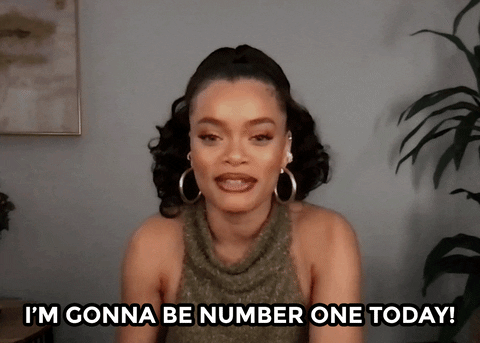Pay Yourself First Budgeting
When it comes to managing your money, few strategies are as simple and effective as Pay-Yourself-First Budgeting. This powerful method flips traditional budgeting on its head by prioritizing savings and investments before all other expenses. In this guide, we’ll explore what Pay-Yourself-First Budgeting is, how it works, and how you can use it to build long-term financial security.
What is Pay-Yourself-First Budgeting?
Pay-Yourself-First Budgeting is a financial strategy where you allocate a portion of your income to savings and investments immediately after receiving your paycheck. By treating savings as your top priority, this method ensures that you’re consistently working toward financial goals rather than relying on leftover income to save.
Example: If you earn $4,000 per month and aim to save 20%, you’ll transfer $800 into savings or investment accounts before using the remaining $3,200 for other expenses.
This proactive approach helps you build wealth, reduce financial stress, and maintain better control over your money.
How Pay-Yourself-First Budgeting Works
- Set Your Savings Goals: Decide what percentage of your income you want to save. Experts often recommend saving at least 20% of your income.
- Automate Your Savings: Schedule automatic transfers to your savings or investment accounts immediately after your paycheck is deposited.
- Budget the Remaining Income: Use traditional budgeting methods to allocate what’s left for essentials (like rent and groceries) and discretionary spending.
- Track and Adjust: Periodically review your savings goals and make adjustments based on changes in your income or expenses.
Benefits of Pay-Yourself-First Budgeting
- Consistent Savings: Ensures you save regularly, building financial security over time.
- Encourages Discipline: Forces you to live within the means of your post-savings income.
- Builds Wealth: Helps grow your emergency fund, retirement accounts, and other investments.
- Reduces Financial Stress: Provides a safety net for unexpected expenses.
Step-by-Step Guide to Paying Yourself First
Step 1: Determine Your Savings Goal
Start by assessing your financial priorities. Are you building an emergency fund, saving for retirement, or investing in a large purchase? Decide on a fixed percentage or dollar amount to save each month.
Example Goals:
- Emergency Fund: Save 3-6 months of living expenses.
- Retirement: Contribute to a 401(k) or IRA.
- Investments: Build a diversified portfolio.
Step 2: Automate Your Savings
Set up automatic transfers to:
- High-yield savings accounts for short-term goals.
- Retirement accounts like 401(k)s or IRAs for long-term goals.
- Investment platforms for wealth growth.
Step 3: Budget the Rest
Allocate your remaining income to:
- Needs: Rent, utilities, insurance, groceries.
- Wants: Entertainment, dining out, hobbies.
Step 4: Track and Adjust
Regularly review your progress. If your income increases or your expenses change, update your savings contributions accordingly.
Example
Case Study: Sarah earns $3,500 per month. She adopts Pay-Yourself-First Budgeting to achieve her financial goals:
- Savings: $700 (20%) to build an emergency fund.
- Fixed Expenses: $2,000 for rent, utilities, and insurance.
- Discretionary Spending: $800 for groceries, dining, and hobbies.
By automating her savings, Sarah stays on track and avoids the temptation to overspend.
Common Challenges and How to Overcome Them
Challenge 1: Not Enough Income to Save Consistently
Solution: Start small. Save 5-10% and gradually increase as your income grows.
Challenge 2: Unexpected Expenses Disrupt Savings
Solution: Use a sinking fund or emergency savings to handle surprises without affecting your regular contributions.
Challenge 3: Irregular Income
Solution: Save a percentage of each paycheck rather than a fixed amount.
Tools and Resources for Pay-Yourself-First Budgeting
- Budgeting Apps: Use tools like YNAB or Mint to track spending.
- High-Yield Savings Accounts: Earn interest on your emergency fund.
- Investment Platforms: Consider apps like Betterment or Vanguard to grow wealth.
- Savings Calculators: Use online tools to estimate how much you need to save for specific goals.
FAQ Section
Can I use Pay-Yourself-First with other budgeting methods?
Yes! Combine it with systems like the 50/30/20 Rule or Zero-Based Budgeting to allocate remaining income effectively.
How much should I save using this method?
Aim for at least 20% of your income, but adjust based on your financial situation and goals.
What if I have debt?
Prioritize minimum debt payments alongside savings. Consider splitting the 20% between savings and extra debt payments.
Pay Yourself First!
Ready to take control of your finances? Start paying yourself first today by automating your savings and building a solid financial foundation. Check out our free Savings Tracker Template to help you stay on track. For more budgeting tips, explore Zero-Based Budgeting or The 50/30/20 Rule.
With Pay-Yourself-First Budgeting, you can achieve financial security and build wealth effortlessly. Start now!






